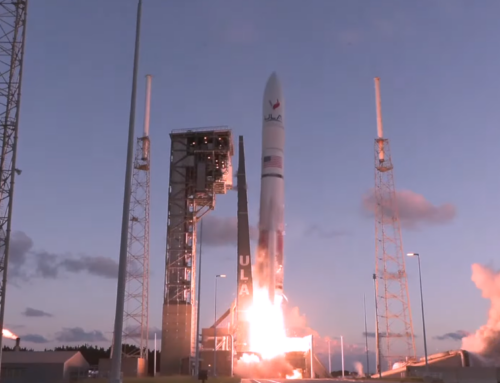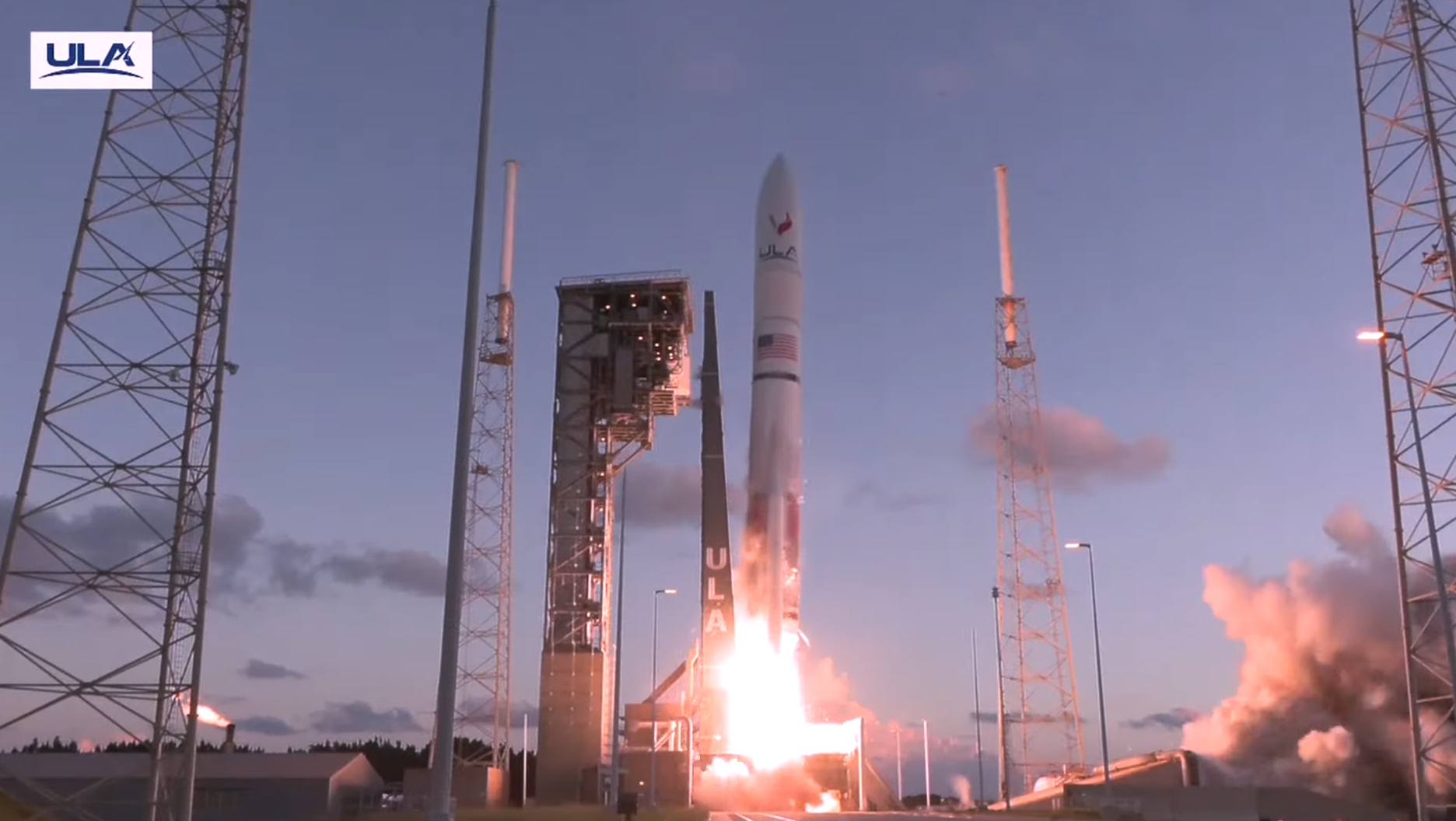Frank Calvelli, Assistant Secretary of the Air Force for Space Acquisition and Integration, speaks at the 2022 Air, Space & Cyber Conference. (Credit: AFA)
WASHINGTON — Air Force Assistant Secretary for Space Acquisition and Integration Frank Calvelli has created a new high-level office to ensure development programs run by different Space Force acquisition organizations fit together in the end, an Air Force spokesperson confirmed today.
Under a July 9 memo provided by the Air Force to Breaking Defense, Calvelli has expanded and elevated the Space Force Space Systems Integration Office — established to oversee Space Force acquisition programs run by Space Systems Command (SSC) and currently headed by Claire Leon — to include programs at the semi-independent Space Development Agency (SDA) and Space Rapid Capabilities Office.
In her new position as “Chief Space Systems Engineer (CSSE),” Leon will serve as Calvelli’s “senior advisor for integration across all Space Force Program Executive Officer (PEO) portfolios and applicable mission partner organizations,” the memo states.
The Air Force spokesperson said that the “vision” for the new office “is to facilitate better integration across Program Executive Officers to deliver end-to-end capabilities that work, faster.”
The change was made effective with the signing of the memo, but the makeup of Leon’s office has yet to be established, the Air Force spokesperson said. SSC and the Space System Integration Office “are currently evaluating various organizational changes to ensure SSIO can focus on the new Chief Space Systems Engineer role and perform it well,” the spokesperson said.
The Space System Integration Office currently numbers some 100 contractor and government personnel.
While she will not have direct budgetary authority to force those PEOs to do anything, Leon will be able to provide “enterprise Program Objective Memorandum (POM) prioritization recommendations” to Calvelli in his role as “Service Acquisition Executive (SAE).”
The POM is the Defense Department’s term of reference for the five-year budget planning process that takes place every year and results in the annual budget request for each fiscal year. DoD is currently involved in putting together the FY26 request and the POM through FY30.
Calvelli told Breaking Defense in an email that up to now the Space Acquisition Council, which he chairs, has been the primary forum “to share information and focus on macro-level integration across the larger space enterprise,” but that the new office will allow him to focus on integration across the programs for which he is responsible.
The Space Acquisition Council also includes the Air Force undersecretary, the DoD assistant secretary for space policy, the director of the National Reconnaissance Office, the commander of US Space Command and the Space Force chief of staff. Further, a review of DoD space acquisition by the Defense Business Board last December expressed concern that the council can second-guess Calvelli’s decisions — suggesting that its review powers be stripped.
Calvelli explained to Breaking Defense that many of the individual programs under his purview, while run by different PEOs and/or different organizations, “are just single pieces of a bigger architecture.”
One good example, he said, is “the set of programs that make up the Missile Warning/Missile Tracking mission area.”
Both SSC and SDA are working on new ballistic and hypersonic missile warning/tracking satellites. SSC is running both the Next-Generation Overhead Persistent Infrared program comprising a handful of satellites to operate in geosynchronous Earth orbit and highly elliptical polar orbits, and the Resilient Missile Warning/Missile Tracking — MEO program to put some 30 satellites in medium Earth orbit. SDA has deployed a set of technology demonstration satellites, optimized for hypersonic missile tracking, as an initial “tranche” of what eventually will be a constellation of hundreds of birds in low Earth orbit.
In a June speech to his staff, provided to Breaking Defense, Calvelli stressed that each program manager needs to “think and act like a systems engineer” because whatever is being developed “may only be a part of an overall system” of many moving parts.
“You need to understand the bigger picture of how your system fits into the mission and interfaces with other programs and ensure your portion of the program is properly tested and integrates with other pieces to form a complete system or capability,” he told staff.
But up to now, even when focused on the same mission area, many programs have been “by and large” operating as “stovepipes,” one former senior Pentagon official said. “You know they shouldn’t, but they do.” So the mission area in the end “doesn’t work as an architecture” because “it’s not designed to work together.”
The former official noted that the creation of the new office should be music to the ears of lawmakers overseeing the Space Force, who have long been concerned about the cacophony created by the fact that there are dozens of Pentagon organizations, offices and subunits with their fingers in the space acquisition pie.
Indeed, the programmatic overlaps, gaps and competition for resources stemming from multiple space budget fiefdoms was a key reason behind congressional moves to create the Space Force in the first place.
“I actually think it’s an excellent move. It should have been done along time ago, at the beginning. But, yes, I’m glad that [Calvelli’s] doing this, and hopefully Claire will get the resources and support. The discipline has to be institutionalized, and that will take a long time,” the former official said.











